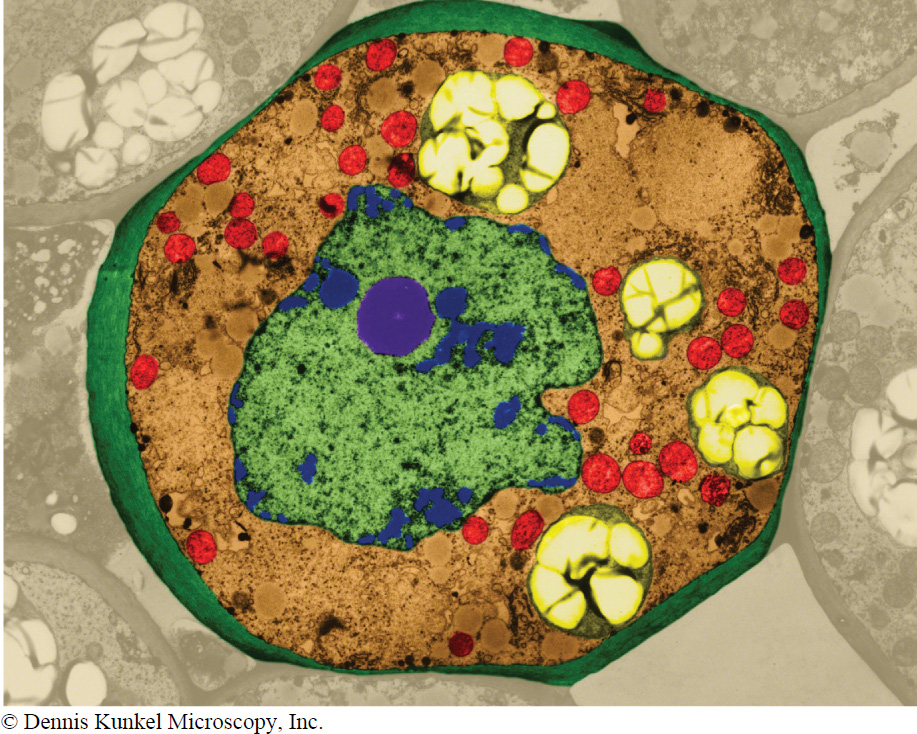3.13–3.22: Nine important landmarks distinguish eukaryotic cells.

The nucleus is the largest and most prominent organelle in most eukaryotic cells. In fact, the nucleus is generally larger than any prokaryotic cell. If a cell were the size of a large lecture hall or movie theater, the nucleus would be the size of a big-

Three important structural components stand out in the nucleus (FIGURE 3-28). First is the nuclear membrane, sometimes called the nuclear envelope, which surrounds the nucleus and separates it from other parts of the cytoplasm. Unlike most plasma membranes, however, the nuclear membrane consists of two bilayers, one on top of the other, much like the double-

Nuclear pores are large enough to permit free diffusion of small molecules, such as water, sugars, and ions. The nuclear pore protein complexes, however, are able to regulate the transport of many other molecules across the nuclear envelope in both directions. Two types of transport, in particular, are important. These include 1) the movement from the cytosol into the nucleus of proteins that interact with DNA and catalyze nuclear activities, and 2) the movement from the nucleus to the surrounding cytosol of RNA and RNA-
113
The second prominent structure in the nucleus is the chromatin, a mass of long, thin fibers consisting of DNA with some proteins attached that keep the DNA from getting impossibly tangled. Most of the time, as the DNA directs cellular activities, the chromatin resembles a plate of spaghetti. When it’s time for cell division (a process described in detail in Chapter 6), the chromatin coils up and the threads become shorter and thicker until they become visible as chromosomes, the compacted, linear DNA molecules that carry hereditary information.
A third structure in the nucleus is the nucleolus, an area near the center of the nucleus where subunits of the ribosomes, a critical part of the cellular machinery, are assembled. Ribosomes are like little factories in which the information stored in the DNA is used to construct proteins, including enzymes and the proteins that make up tissues such as the bark of trees or the bone of vertebrates. The ribosomes are built in the nucleolus but pass through the nuclear pores and into the cytosol before starting their protein-
TAKE-HOME MESSAGE 3.13
The nucleus is usually the largest and most prominent organelle in the eukaryotic cell. It directs most cellular activities by controlling which molecules are produced and in what quantity. The nucleus is the storehouse for hereditary information.
How does the nuclear membrane differ from the plasma membrane?
114